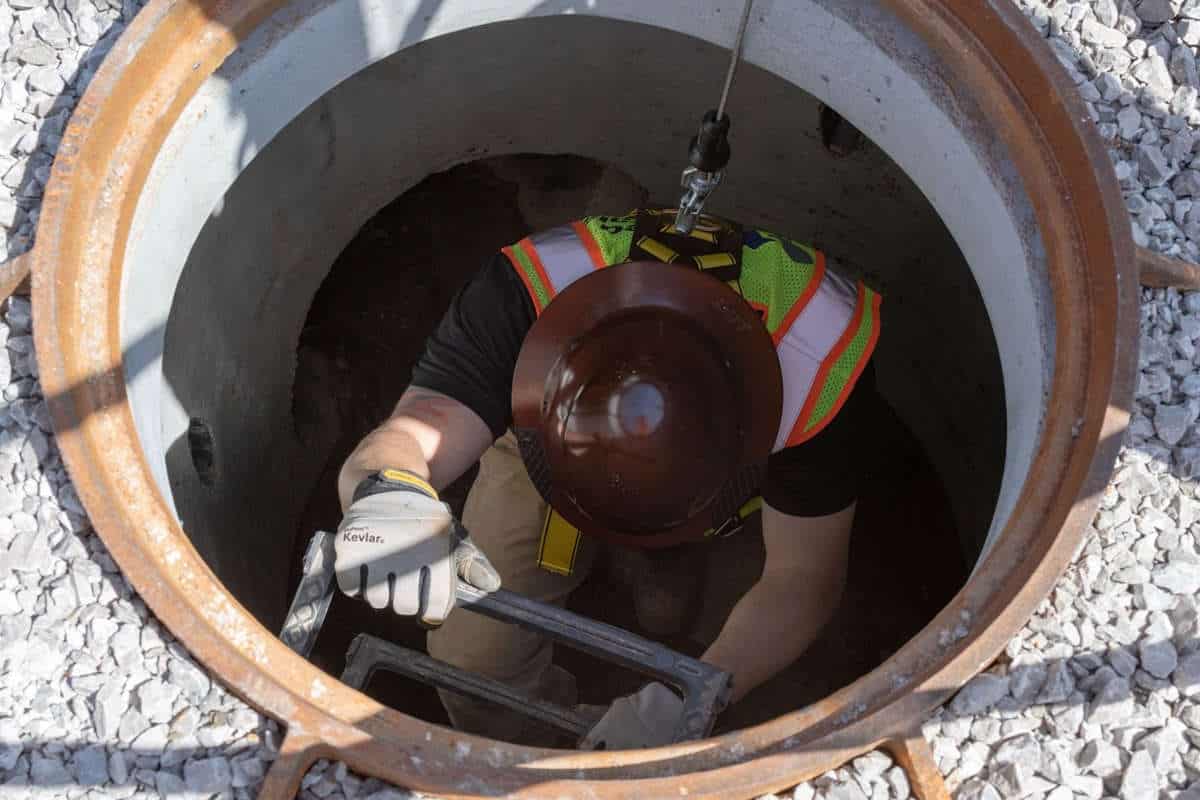Emergency Rescue Planning
 When employers choose not to use a trench protective system or fail to perform air monitoring before allowing workers to enter a confined space and somebody becomes trapped or injured, not only is the victim’s life on the line, but also the lives of other workers. All too often, the natural response is to jump in and help the worker in trouble. One thing is certain: If you do not have a protection plan in place, it’s unlikely you have prepared workers to properly attempt a rescue.
When employers choose not to use a trench protective system or fail to perform air monitoring before allowing workers to enter a confined space and somebody becomes trapped or injured, not only is the victim’s life on the line, but also the lives of other workers. All too often, the natural response is to jump in and help the worker in trouble. One thing is certain: If you do not have a protection plan in place, it’s unlikely you have prepared workers to properly attempt a rescue.
Even when trenches are sloped, shored or shielded and safe confined space entry procedures are followed, workers will, in order to save time, take a chance on entering the trench or confined space before protective measures are in place or after they have been removed. In many situations, workers will succeed without an incident, but it is still a “crap-shoot.” What if Murphy (Murphy’s Law) is hanging around and something does happen when you least expect it? A worker’s first reaction may be to jump in to help, only to become a victim too. Someone may call the fire department and expect them to rescue the worker. Unfortunately, you cannot always count on them to be prepared or trained for these types of rescues.
Even if fire department and rescue company personnel are fully trained and equipped to handle a trench or confined space rescue, time is a critical factor. How quickly can they get to the accident scene? How long will it take for them to evaluate the situation and gear up to attempt the rescue? How accessible is the scene? If they are delayed because they’re on another call, what is the work crew expected to do?
New Confined Space Standard
The new Confined Spaces in Construction standard now requires construction employers to designate rescue and emergency services if their employees are working in permit-required confined spaces and if achieving a rescue would require the rescue team to enter the confined space. Employers are also required to evaluate the designated rescue team’s ability to respond in a timely manner, determine if the team is equipped to handle a rescue in the type of permit space, inform the rescue team of the types of hazards they may confront, and to provide the rescue team access to all permit-required spaces from which rescue may be necessary. Although the above requirements do not apply [1926.1203(e)(1)] to spaces entered using the alternative procedures listed in (e)(1) and (e)(2), a rescue plan is still essential and adherence to the above requirements is highly recommended.
Non-entry rescue systems are required wherever possible, unless the retrieval equipment would increase the overall risk of entry or would not contribute to the rescue of the entrant. Whenever non-entry rescue is selected, the employer must ensure retrieval systems and methods are used when an authorized entrant enters a permit space. The employer must also confirm, prior to entry, that emergency assistance would be available in the event that non-entry rescue fails.
When it comes to confined space rescue, a non-entry rescue plan using a tripod or similar mechanical device, retrieval winch and full-body harness is always preferred to having someone enter into a dangerous space to retrieve a victim. With that said, it is recommended that contractors use non-entry retrieval systems whenever possible when workers are entering any type of confined space, even those that are classified as alternate procedure or non-permit spaces. Rescue will be simplified by using non-entry retrieval systems and the worker can be removed from the confined space quickly and easily without exposing other workers to a potentially hazardous situation.
Planning and Coordination
The best emergency plan is prevention. When that fails and something goes wrong, do your crews know what to do? Every worker must know not to jump into a collapsed trench or confined space to help a victim. Untrained would-be rescuers often become victims themselves, which only adds to the problem and requires additional rescue operations.
A good safety program will include procedures to follow in the event of an emergency situation (see the Emergency Rescue Checklist). All crew leaders and workers should fully understand the emergency procedures so they can respond quickly, decisively and safely if an emergency occurs.
If there is a possibility your workers will be assisting firefighters or a technical rescue team (TRT) as part of the emergency plan, your team must understand how the Incident Command System (ICS) works. The fire department/TRT will take charge and implement the ICS as soon as it arrives on scene.
Having an emergency plan may not be enough. When an accident occurs and somebody is trapped by a cave-in or overcome by a hazardous atmosphere in a confined space, response time is critical. If a victim is buried by a cave-in or in a space that is oxygen deficient, rescuers have approximately six minutes to ensure the victim can breathe. Otherwise, there is a good chance the victim will die.
When working in an area where there is no TRT, only the work crew may be able to rescue the victim in a timely fashion. However, only people who have been trained to perform a rescue safely, in the given type of emergency, should be permitted to attempt a rescue. If workers need to attempt a rescue, the employer must have the appropriate rescue equipment readily available.
Because of the many variables involved, including location, company size, equipment and fire department/TRT response time, I can only offer general procedures for preparing for a rescue. Some contractors have trained workers on how to perform rescues. Both contractors and NUCA chapters have “bridged the gap” with local fire departments/TRTs and created a resource list of equipment the fire department can use in the event of an emergency. Others have also joined forces with fire departments to train for rescue emergencies. If they train together, contractors can teach firefighters some of the tricks of the trade, such as how to use different types of trench protective systems, how trenches can be shored and ways to move dirt quickly without endangering the rescuers (e.g. vacuum excavators). Firefighters can show contractors how to operate under the direction of an ICS, how to package and safely transport victims and more.
While most contractors do not have the ability and resources to fully train their own rescue teams, those who have emergency plans can work with other contractors and/or local rescue teams to successfully implement a rescue. This is especially true if the contractors and emergency services have trained together and are confident of each other’s abilities. Rescue teams can bring equipment, shoring, tools and trained manpower to the scene if needed. Valuable time can be saved if jobsite managers and crew leaders are prepared to implement rescue procedures or interact with a rescue team quickly and efficiently. The rescue team commander will usually welcome assistance if he or she is confident that the workers know what to do and understand the rescue procedure and ICS.
Is Your Company Prepared for an Emergency?
Rapid, unplanned and unorganized rescue attempts can result in victims and rescuers getting killed. With that in mind, ask yourself these questions to see how prepared your company and employees are to deal with an emergency rescue:
- Does the company have a rescue plan and team prepared to implement it quickly, either alone or in conjunction with local rescue services?
- Do all crew leaders understand the emergency plan, ICS and to what level they are permitted to respond to different types of emergencies?
- Has a member of each crew been trained in first aid and CPR?
- Do all the other workers know what is expected of them in the event of an emergency?
If the answer to any of these questions is no, take time to create a plan for a future trench collapse or confined space emergency; there will not be time if and when an emergency situation arises. It is better to have a well-designed emergency plan and never have to use it, than to risk serious injuries and fatalities if something unexpected happens. There is also an added value for establishing an emergency plan and training workers. Workers will gain a whole new respect for how difficult it is to perform a rescue and why it is imperative they follow safety procedures. And as I said before: The best emergency plan is prevention!
George Kennedy is NUCA Vice President of Safety.




